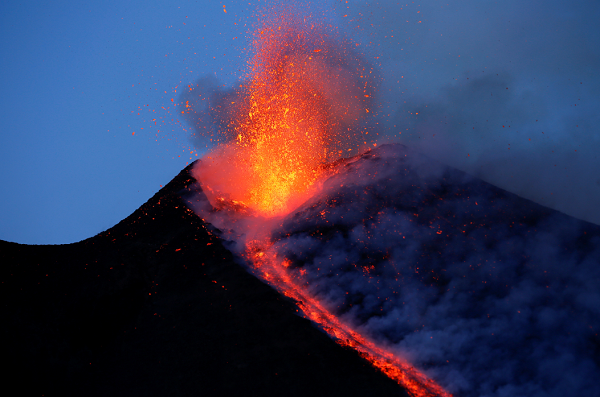'Mountain Of God' On The Verge Of Eruption, Volcano Could Destroy Anthropological Sites

An active volcano in northeastern Tanzania, known in the local language as the “Mountain of God,” has recently been showing signs of eruption anytime soon, according to National Geographic.
Ol Doinyo Lengai, the 7,650-foot-tall peak is the only active volcano on the Earth that erupts with a carbonatite, a type of igneous rock rich in carbonates such as calcite and dolomite. The volcano is also unique because of the type of carbonatite that is brought to its surface. Called natrocarbonatite, the Ol Doinyo Lengai igneous rock is rich in sodium and potassium.
Read:Man Commits Suicide By Jumping Into Hawaii Volcano Crater
It is about 70 miles from the city of Arusha in Tanzania and is known for its proximity to some of the world’s most important paleoanthropological sites. These include a site in Laetoli where the footprints made by an early human ancestor that roamed Africa more than 3.6 million years ago were discovered, providing crucial evidence that walking on two legs was picked up early in the human lineage. Another area in danger is a site called Engare Sero where similar footprints called a “dance hall” of Homo sapiens were found.
The peak, known for its bizarrely thin, silvery lava, is a place of pilgrimage for the pastoralist ethnic group of Maasai, who travel there to entreat their god Engai for rain, cattle, and children.
According to Celia Nyamweru, an expert, the Ol Doinyo Lengai was formed by a complex sequence of events including explosive eruptions of tuffs and agglomerates and effusive eruptions of lava and is less than 370,000 years old.
There have been other instances of the volcano’s dramatic activity, including once in 2007 when the volcano belched out a plume of ash that extended at least 11 miles downwind. Lava running down the north and west flanks ignited burn scars that were visible from the space.
Since then, many geophysicists have tried a number of methods to track how magma deforms the volcano’s surface. D. Sarah Stamps, a geophysicist at Virginia Tech In concert with Tanzania’s Ardhi University and South Korea’s KIGAM, has reportedly set up a monitoring system that collects data on the volcano’s activity in real time. The data from January showed parts of the volcano lifting upward, sending a warning that an eruption could well be on the cards.
Read: Ice Age Climate Change Mystery: Did Ocean Volcanoes Keep Carbon Dioxide High?
“Imminent in our case means in one second, in a few weeks, a couple of months, or a year or more,” she told National Geographic, adding that there were increased ash emissions, earthquakes, uplift at small volcanic cones, and a widening crack at the top of the volcano on the west side .
The volcano is previously known to have caused large debris flows and debris avalanches that could potentially pose a significant threat to the prehistoric sites and camps. Stamps also said that the same could happen again, especially if a large eruption and a heavy rainy season were to coincide.
© Copyright IBTimes 2024. All rights reserved.











